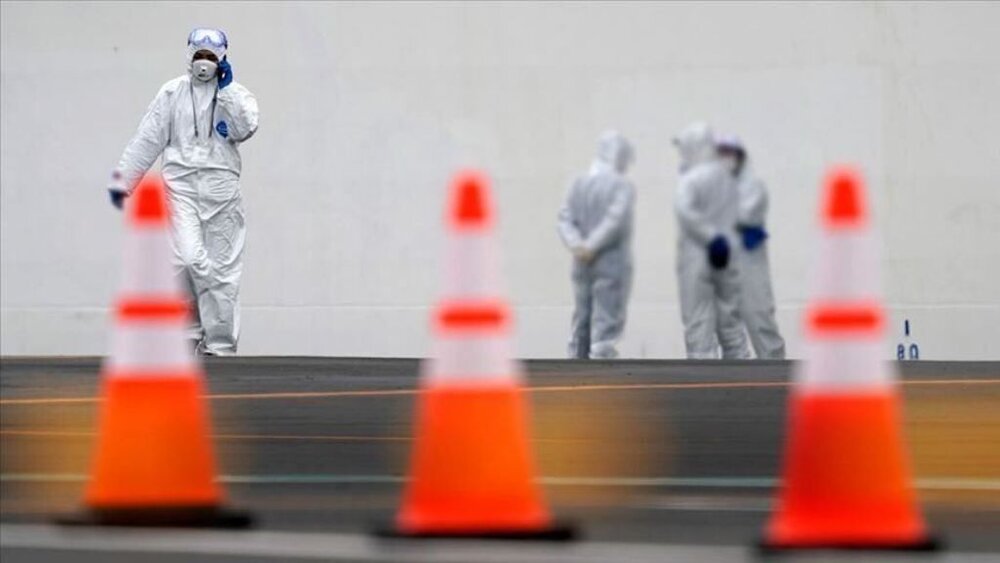Operation Headquarters come to contain coronavirus

TEHRAN – With the high prevalence of the pandemic in late October 2020, the Operation Headquarters for Coronavirus Control was established, which led to significant control of the disease in the country, as the number of high-risk “red” cities reduced from over 160 to 7.
Leader of the Islamic Revolution Ayatollah Ali Khamenei ordered the establishment of the Operation Headquarters for Coronavirus Control on October 22, 2020.
All approvals of the National Headquarters for Coronavirus Control are followed for accurate implementation and monitoring by the Operation Headquarters.
To strengthen various capabilities in the country to curb the disease, the headquarters use all the capacities inside the country, including public and private, military and law enforcement forces and related organizations, NGOs, religious organizations, mosques, and charities.
Now after two months of the Headquarters establishment, along with the worthy efforts of physicians, nurses, and other medical staff, as well as responsible bodies, volunteer groups, and the whole nation, the epidemic is under control.
In an announcement, the Operation Headquarters for Coronavirus Control called on people to diligently implement health protocols, continue to use masks, and observe social distancing rules, and avoid family gatherings, until the complete elimination of the disease.
Plans for fighting COVID-19
Due to the high prevalence of the disease, strict COVID-19 restrictions took effect on October 26, 2020.
The National Headquarters for Coronavirus Control started strict restrictions in 43 cities that had the highest rate of infection in the country. Ten days later, decisions were made to set new limitations on highly-affected areas for another 10 days, through which 46 cities undergone restrictions.
The plan divided cities into three levels of alert, namely red, orange, and yellow.
Another plan also went into effect on November 21, 2020, according to which all occupations, except for emergency services and basic food suppliers, get closed for two weeks in high-risk cities.
In another move approved by the National headquarters for Coronavirus Control, with the efforts of the Basij, people, and volunteers, as well as a national plan named after martyr Qassem Soleimani so far the transmission chain of the disease has decreased by 50 percent, and high-risk red zones turned to yellow and orange.
Martyr Soleimani plan is being implemented in cooperation with the Ministry of Health, Basij, and the Red Crescent Society, through which volunteer forces provide information, testing, diagnosis, referral of suspects to health centers, and offer services by visiting people’s homes.
Some 22,530 monitoring teams have been formed within the framework of the plan since December 15 with 103,000 members, of which more than 270,000 are in contact to identify COVID-19 patients, said Jafar Sadeq-Tabrizi, head of the Network Management Center of the Ministry of Health.
Some 6,730 home care teams have been formed in the country with the participation of 18,000 forces, who have taken care of 41,000 people at home, and rapid result tests have been performed on 7,500 suspects, he explained.
Since December 15, 2020, with the participation of 61,000 people, more than 10,000 monitoring teams have been formed. About 782,000 visits and monitoring of various places and centers have been done to warn those who do not observe the health protocols, Sadeq-Tabrizi stated.
Declining trend of daily new cases and mortalities
So, after several months of snowballing death toll due to COVID-19, finally, all the national plans and programs together resulted in a declining trend of daily new cases and mortalities dropped to below 100.
In a press briefing on Tuesday, Health Ministry spokesperson Sima-Sadat Lari confirmed 6,408 new cases of COVID-19 infection, raising the total number of infections to 1,299,022. She added that 1,088,465 patients have so far recovered, but 4,507 remain in critical conditions of the disease.
During the past 24 hours, 98 patients have lost their lives, bringing the total number of deaths to 56,360, she added.
So far, 8,226,166 COVID-19 diagnostic tests have been performed in the country.
Lari noted that currently, 7 cities are in high-risk “red” zones, and 30 cities are in the orange zone and 219 in low-risk “yellow” zones.
FB/MG
Leave a Comment